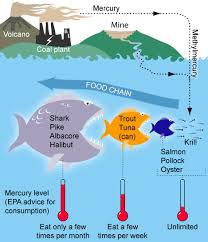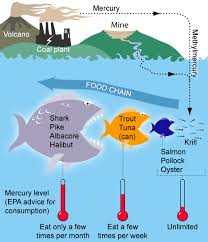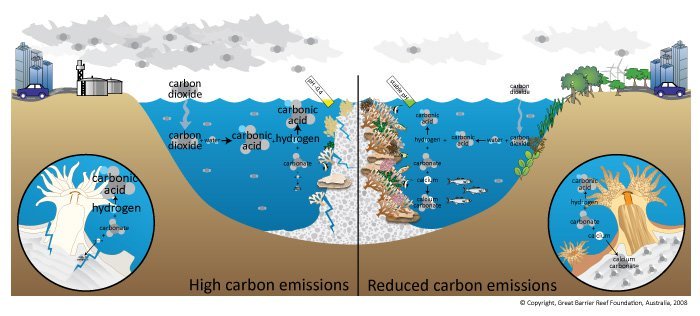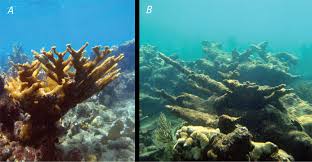
The 7 Biggest Threats to Our Oceans: Threat #5 Mercury Pollution in our Oceans
Look at any seafood guide and you're bound to come across the occasional red flag with an ominous warning: “High in Mercury.” Scary enough, but what exactly does that mean? Just how is mercury winding up in the fish on your plate?
Mercury, a naturally occurring, yet toxic element when exposed in large quantities, is polluting our Earth’s oceans. Within recent years, the amount of mercury on the surface of the ocean, has more than tripled, taking a toll on the environment and the animals within it. Sadly the U.S alone, generates nearly half of all mercury emissions, averaging around 33 tons annually from power plants alone.
 Mercury can travel via runoff, and also from emissions that are released into the atmosphere. In gold mining, miners use liquid mercury to soak up gold from ore, then vaporize the toxic metal while leaving the gold behind. A major source of mercury pollution is from coal burning power plants. Burning coal releases mercury naturally contained in the fuel. Once in the atmosphere, the metal can travel for months and for thousands of kilometers until rain deposits it into oceans.
Mercury can travel via runoff, and also from emissions that are released into the atmosphere. In gold mining, miners use liquid mercury to soak up gold from ore, then vaporize the toxic metal while leaving the gold behind. A major source of mercury pollution is from coal burning power plants. Burning coal releases mercury naturally contained in the fuel. Once in the atmosphere, the metal can travel for months and for thousands of kilometers until rain deposits it into oceans.
There, bacteria help convert it to the neurotoxin methyl mercury, the most toxic form of mercury for living things. The methyl mercury accumulates in higher concentration as it makes its way up the food chain in a process called bioaccumulation, meaning the animals highest up on the food chain, such as the swordfish and tuna, carry the most mercury. Polar bears, whales, and sharks, have also been reported to have had high levels of this toxin.
Unfortunately, when humans consume high amounts of these apex fish, the mercury then accumulates within them. Seafood is the source of nearly all the methyl mercury that we acquire in our bodies. There’s still much to be learned about the effects of methyl mercury on adults – susceptibility to mercury could be genetic, or the result of diet or stress. But there is little debate that methyl mercury presents the greatest risk to fetuses, infants and children, whose growing brains and nervous systems can be adversely affected.
The good news is, that changes at higher levels are being made. The U.S EPA’s rule to reduce 90 percent of the mercury emissions from coal-burning power plants, was passed in a recent Senate vote. This is a huge step on behalf of the U.S towards safer seas. Now, other countries just need to follow suit, and shift away from burning fossil fuels and convert to renewable resources.
 Those of us who love what the ocean gives us in terms of recreation and lifestyle, most likely also love what the ocean gives us in terms of food. So, how can we reduce our exposure to mercury? By consumer choices. In a recent report from the Blue Ocean Institute, it is stated that “the answer isn’t to avoid seafood, it’s to avoid mercury”.
Those of us who love what the ocean gives us in terms of recreation and lifestyle, most likely also love what the ocean gives us in terms of food. So, how can we reduce our exposure to mercury? By consumer choices. In a recent report from the Blue Ocean Institute, it is stated that “the answer isn’t to avoid seafood, it’s to avoid mercury”.
Pregnant or nursing women and young children are of the highest risk of mercury, and should consider limiting or cutting high mercury fish from their diet. There are many online resources to find out which species of seafood contain the highest levels of mercury.
NRDC and GotMercury.org provide online mercury calculators, so you can check before you decide what to put on your plate and what safe quantities may be. By being educated consumers, we can help to protect our own health, and the health of our oceans!



Leave a comment
This site is protected by reCAPTCHA and the Google Privacy Policy and Terms of Service apply.